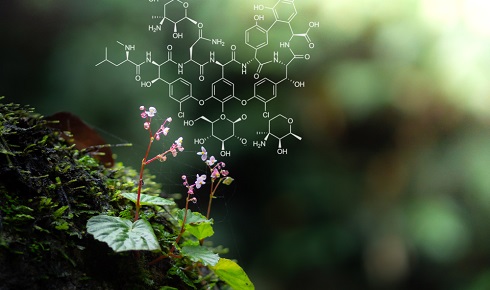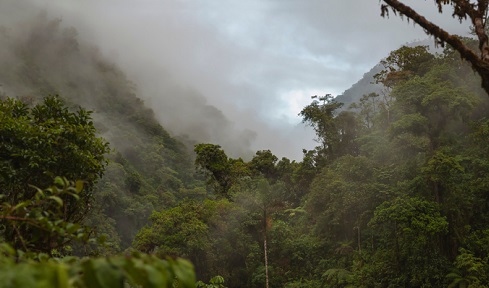The digital loophole

Adam McCarthy looks at how to link open and widely-shared digital genetic sequences with the ecosystems and nations where they are found in nature
September 12th 2022
Adam McCarthy is the RSB’s policy intern and a PhD student at the University of Manchester.
This December representatives from hundreds of nations will gather in Montreal, Canada, for the UN Biodiversity Conference, or COP15. But the aim to agree on a new Paris-style agreement for biodiversity, that among other things would designate 30% of global land and sea as protected areas by 2030, is currently under threat before the conference has even started, as a dispute over digital sequence information (DSI) deepens.
The devil's in the data
The definition of DSI is itself subject to international negotiations at meetings such as COP15, but in a broad sense it refers to the masses of genetic sequence data at the heart of so much of modern bioscience.
The disagreement about its governance relates to the widely signed 2010 Nagoya Protocol, which aimed to implement the fair and equitable sharing of benefits, monetary or otherwise, arising from physical genetic resources (think antimicrobial products developed from tropical plants). By feeding back such benefits to indigenous communities and conservation efforts, the Nagoya Protocol aimed to link the profits of biotechnology research and innovation to the maintenance of natural biodiversity.
Difficulties have arisen because the importance and value of digital genetic information was largely overlooked by the Nagoya Protocol – meaning that profits derived from the use of these openly shared resources do not generate any benefit sharing. Using the example of the antimicrobial plant, if the DSI associated with its antimicrobial properties can be freely accessed and developed into products by anybody, that undermines the Nagoya Protocol.
A wicked problem
A system for financial access and benefit sharing to close this ‘loophole’ is proving difficult due to fears that it could hinder open access and constrain research and innovation that benefits society.
The disagreement about the solution and how it might be achieved means that this issue exhibits features of a ‘wicked’ sustainability problem – not wicked in an evil sense, but defined by difficulty in its resolution. The north-south tension is palpable, with the largest yet underutilised genetic resources and associated indigenous knowledge existing in southern countries, and most existing DSI being generated, held and utilised by northern organisations. An African delegation, considering the expected ‘biotechnology revolution’ ahead, has proposed that 1% of DSI-derived profits should be funnelled into biodiversity conservation where those genes originated.
However, this has generated pushback considering that genes exist in species that traverse borders, with homologues in many related species. This is compounded by the fact that only 16% of sequences on major platforms contain information about the country of origin and the benefits of a given sequence may only be realisable in the aggregate with others, if at all.
A provocative article, signed by 175 leading researchers and titled ‘When the cure kills’[1] warns that financial benefit sharing at the point of use will actually stifle research for southern conservation research groups, which have benefitted from open access to DSI thus far. Many organisations, including the RSB, have agreed with the notion of benefit sharing for DSI in principle, but not in practice[2].
 Masses of open genomic data makes it hard to understand where valuable genetic sequences are from, and who should be compensated for their use
Masses of open genomic data makes it hard to understand where valuable genetic sequences are from, and who should be compensated for their use
Finding a compromise
Genetic sequences from species great and small play a vital role in the practice and advancement of modern biological sciences. The discovery and improvement of CRISPR-Cas9 and the species-specific DSI required to make the system programmable is one famous example; our ability to rapidly sequence, digitise and share information on the SARS-CoV-2 virus was also essential in helping us to understand, track and respond to the pandemic, culminating in the development of multiple vaccines.
These societal benefits, albeit unevenly distributed, show the power of an open approach to DSI. For this reason many organisations and nations have taken a hard line, stating that without open access to DSI an agreement on access and benefit sharing cannot be reached.
Hard work has gone into breaking the impasse, with proposals for innovative options that ensure open access for southern and non-commercial users while promoting equitable benefit sharing[3]. This includes using existing expertise and infrastructure for institutional, subscription-based access or platforms based on creative commons-style licences for DSI.
Some options require additional infrastructure to be developed, such as micro-levies for sequencing reads or the use of block-chain technology to track usage. These could feed into a development bank-style fund for biodiversity without disrupting open access. After all, when has ‘technically difficult’ meant impossible to scientists and policymakers?
As these options are laid out for discussion in December, difficult decisions must be made. A principles-based approach to this complex issue requires us to ask what a system for the responsible use of DSI looks like. What would the impacts of any agreement have on both the international scientific community, but also efforts at conservation and protection of indigenous communities? We can take inspiration from organisations such as the Royal Botanical Gardens, Kew which have demonstrated respectful and practical approaches that enable a just distribution of benefits while ensuring useful distribution of DSI from botanical collections[4].
Creative solutions
So much is at stake here: as shown by the recent Dasgupta report, we urgently need to think of new ways to value the biosphere to protect it and therefore ourselves. Attempts to govern biological data and assign value to our biosphere are fundamental issues for our society.
Any solution must be decided in a deliberative and anticipatory way, and include all stakeholders, such as DSI users and providers of genetic resources and their associated knowledge. Wicked problems require creative and inclusive solutions – and biologists need to step up and engage in these debates to ensure the best outcome for the future of the biosphere, the biological sciences and humanity.
1) Prathapan, K. D. et al. When the cure kills – CBD limits biodiversity research. Science 360, 1405–1406 (2018).
2) Response from the Royal Society of Biology to Defra’s request for views and relevant information on potential implications of the use of digital sequence information (DSI) on genetic resources for the three objectives of the Convention on Biological Diversity (CBD) and for the objective of the Nagoya Protocol on Access and Benefit Sharing (ABS). (2017).
3) Scholz, A. H. et al. Finding compromise on ABS & DSI in the CBD: requirements & policy ideas from a scientific perspective. (2020).
4) Cowell, C. et al. Uses and benefits of digital sequence information from plant genetic resources: Lessons learnt from botanical collections. Plants People Planet 4(1), 33–43 (2022).


